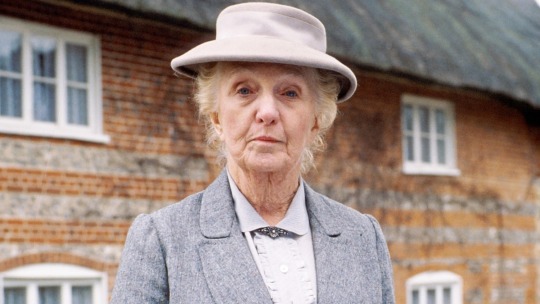#David Hassin
Explore tagged Tumblr posts
Text
David Hassin’s worldwide latest music ‘Zimbabwe’ Is mesmerizing fans on Spotify
0 notes
Audio
Beautiful atmospheric vibes by David Hassin. We added "Clarity" on Buddha Beat. Cheers, Andronic Music ❤️
0 notes
Text
Interesting Papers for Week 11, 2021
Automatic Encoding of a View-Centered Background Image in the Macaque Temporal Lobe. Chen, H., & Naya, Y. (2020). Cerebral Cortex, 30(12), 6270–6283.
Involvement of noradrenergic and serotonergic systems in risk-based decisions between options of equivalent expected value in rats. Cui, R., Ruan, H., Liu, L., & Li, X. (2020). Neurobiology of Learning and Memory, 175, 107310.
Walking Drosophila navigate complex plumes using stochastic decisions biased by the timing of odor encounters. Demir, M., Kadakia, N., Anderson, H. D., Clark, D. A., & Emonet, T. (2020). eLife, 9, e57524.
Slow Waves Promote Sleep-Dependent Plasticity and Functional Recovery after Stroke. Facchin, L., Schöne, C., Mensen, A., Bandarabadi, M., Pilotto, F., Saxena, S., … Adamantidis, A. R. (2020). Journal of Neuroscience, 40(45), 8637–8651.
Neural synchronization between the anterior cingulate and orbitofrontal cortices during effort-based decision making. Fatahi, Z., Ghorbani, A., Ismail Zibaii, M., & Haghparast, A. (2020). Neurobiology of Learning and Memory, 175, 107320.
Predictions from masked motion with and without obstacles. Goldstein, A., Rivlin, I., Goldstein, A., Pertzov, Y., & Hassin, R. R. (2020). PLOS ONE, 15(11), e0239839.
Dopamine-Dependent QR2 Pathway Activation in CA1 Interneurons Enhances Novel Memory Formation. Gould, N. L., Sharma, V., Hleihil, M., Kolatt Chandran, S., David, O., Edry, E., & Rosenblum, K. (2020). Journal of Neuroscience, 40(45), 8698–8714.
Cross-modal involvement of the primary somatosensory cortex in visual working memory: A repetitive TMS study. Guidali, G., Roncoroni, C., Papagno, C., & Bolognini, N. (2020). Neurobiology of Learning and Memory, 175, 107325.
Non-selective inhibition of the motor system following unexpected and expected infrequent events. Iacullo, C., Diesburg, D. A., & Wessel, J. R. (2020). Experimental Brain Research, 238(12), 2701–2710.
Brain-derived neurotropic factor and cortisol levels negatively predict working memory performance in healthy males. Ney, L., Felmingham, K., Nichols, D. S., & Matthews, A. (2020). Neurobiology of Learning and Memory, 175, 107308.
Contextual and Spatial Associations Between Objects Interactively Modulate Visual Processing. Quek, G. L., & Peelen, M. V. (2020). Cerebral Cortex, 30(12), 6391–6404.
Overparameterized neural networks implement associative memory. Radhakrishnan, A., Belkin, M., & Uhler, C. (2020). Proceedings of the National Academy of Sciences of the United States of America, 117(44), 27162–27170.
Assessing within‐trial and across‐trial neural variability in macaque frontal eye fields and their relation to behaviour. Sendhilnathan, N., Basu, D., & Murthy, A. (2020). European Journal of Neuroscience, 52(10), 4267–4282.
Entorhinal-retrosplenial circuits for allocentric-egocentric transformation of boundary coding. van Wijngaarden, J. B., Babl, S. S., & Ito, H. T. (2020). eLife, 9, e59816. h
The peripheral effect of direct current stimulation on brain circuits involving memory. Vanneste, S., Mohan, A., Yoo, H. Bin, Huang, Y., Luckey, A. M., McLeod, S. L., … To, W. T. (2020). Science Advances, 6(45), eaax9538.
Targeted Stimulation of an Orbitofrontal Network Disrupts Decisions Based on Inferred, Not Experienced Outcomes. Wang, F., Howard, J. D., Voss, J. L., Schoenbaum, G., & Kahnt, T. (2020). Journal of Neuroscience, 40(45), 8726–8733.
Supramodal Mechanisms of the Cognitive Control Network in Uncertainty Processing. Wu, T., Spagna, A., Chen, C., Schulz, K. P., Hof, P. R., & Fan, J. (2020). Cerebral Cortex, 30(12), 6336–6349.
The Development of Binocular Suppression in Infants. Yang, J., Kanazawa, S., & Yamaguchi, M. K. (2020). Frontiers in Psychology, 11, 2670.
Adaptive Surround Modulation of MT Neurons: A Computational Model. Zarei Eskikand, P., Kameneva, T., Burkitt, A. N., Grayden, D. B., & Ibbotson, M. R. (2020). Frontiers in Neural Circuits, 14, 67.
Retrieval of allocentric spatial memories is preserved up to thirty days and does not require higher brain metabolic demands. Zorzo, C., Arias, J. L., & Méndez, M. (2020). Neurobiology of Learning and Memory, 175, 107312.
#science#Neuroscience#computational neuroscience#Brain science#research#neurobiology#cognition#cognitive science#psychophysics#scientific publications
20 notes
·
View notes
Photo

LA #CULTURA #ISLÁMICA A TRAVÉS DE LA LITERATURA 😍 Autor: David Castillo "En su obra “El libro negro del Islam”, Hassin afirma que al igual que el Cristianismo, el Islam tiene la misma raíz, el Judaísmo, los mismos profetas y una historia cuyos orígenes provienen del Antiguo Testamento. Además, estas tres religiones monoteístas coinciden en un mismo lugar geográfico, Jerusalén (Hassin (2002)" #IslamOriente Completar en:http://bit.ly/2LIuvbk http://bit.ly/2QhaRni
0 notes
Text
CodeX Goes Virtual with its FutureLaw Conference, Posting it All Online
Last month, I reported that Stanford University has cancelled the face-to-face version of this year’s CodeX FutureLaw Conference, which had been scheduled for April 9 and would have been the conference’s eighth year, as well as the 15th anniversary of CodeX.
But as I noted then, Roland Vogl, executive director of CodeX, the Stanford Center for Legal Informatics, said he planned to work with those who were scheduled to speak at the conference to produce a series of podcasts based on their planned presentations.
Well, that he has done, having now posted the virtual version of CodeX FutureLaw 2020 for your viewing and listening pleasure.
Here is the line-up of programs:
IS LAW’S MOAT EVAPORATING?: IMPLICATIONS OF RECENT NLP BREAKTHROUGHS, with Laura Safdie, Khalid A. Al-Kofahi, Daniel Hoadley and Anne Tucker.
REGULATORY REFORM TO INCREASE OPPORTUNITY AND ACCESS IN THE JUSTICE SYSTEM, with Deborah L. Rhode, Hon. Deno Himonas, Hon. Ann Timmer, and Leah Wilson.
NO-CODING FOR LAWYERS: THE SURGE OF “NO CODE” PLATFORMS FOR LEGALTECH DEVELOPMENT, with Jeroen Plink, Tom Dreyfus, Michael Hassin, Jason Morris, Adam Pingel, and Claire Johnson Raba.
LEGAL INNOVATION IN SUB-SAHARAN AFRICA, with Stephen Caines, Mariya Badeva-Bright, Linda Bonyo, Simba Mubvuma, and Funkola Odeleye.
DIGITAL TRANSFORMATION AND THE PATH FORWARD, with Connie Brenton.
A CONVERSATION ABOUT LEGAL INNOVATION, AI AND CYBERSECURITY WITH GENERAL PATRICK HUSTON, U.S. ARMY, with Brigadier General Patrick Huston.
LEX (LAW, EDUCATION AND EXPERIENCE) TALKS: THE MANY FACES OF FACIAL RECOGNITION, with Stephen Caines.
LEX (LAW, EDUCATION AND EXPERIENCE) TALKS: VC INVESTMENT IN TIME OF CRISIS, with David Hornik.
In addition, CodeX is making available to FutureLaw attendees a recent interdisciplinary summit held by the Stanford CodeX Blockchain Group focusing on critical digital technologies.
from Law and Politics https://www.lawsitesblog.com/2020/04/codex-goes-virtual-with-its-futurelaw-conference-posting-it-all-online.html via http://www.rssmix.com/
0 notes
Text
Cudd Fy Meiau

(Munud i Feddwl 9/5/2017)
Mae’n draddodiad, neu’n fformiwla efallai, i raglenni ditectifs poblogaidd orffen gyda’r prif gymeriad yn esbonio i gynulleidfa lai deallus na nhw sut y gwnaethon nhw ddatrys y drosedd dan sylw. Ar ddiwedd un o rifynnau Miss Marple o’r enw Sleeping Murder mae un o’r cymeriadau llai yn gofyn iddi :
Pam na wnaethon ni feddwl am hynny?
Mae ateb Miss Marple yn un dadlennol iawn.
“Achos wnaethoch chi gredu’r hyn ddwedodd e wrthoch chi” meddai. “Mae’n beth peryglus iawn i gredu pobl. Dw i heb wneud ers blynyddoedd.”
Byddai seicolegwyr a phobl sy’n ymhél â’r gwyddorau meddyliol yn debygol o gytuno gyda safbwynt Miss Marple. Nid am fod pobl yn fwriadol yn mynd ati i balu celwyddau trwy’r amser ond am eu bod nhw fel arfer yn gyfangwbl yn y tywyllwch ynglŷn â’r rhesymau dros eu gweithredoedd.
Mae llawer iawn o dystiolaeth wedi’i hel erbyn hyn yn dangos fod pobl eraill yn aml iawn yn deall y rheswm tu ôl i’n gweithredoedd yn well na ni’n hunain a bod algorithmau cyfrifiadurol cwmnïau fel Facebook yn gynyddol yn ein deall ni’n well, hyd yn oed, na pherthnasau a ffrindiau
Mae’r ffaith ein bod ni’n deall cymhellion pobl eraill yn well na’n cymhellion ni’n hunain yn gwneud synnwyr esblygiadol, wrth gwrs. Mae’n bwysicach i bob anifail wybod a yw anifeiliaid eraill yn ceisio’i dwyllo nag yw hi i wybod a yw e neu hi ei hun yn ceisio twyllo anifeiliaid eraill. Dyma’r traws yn ein llygaid ac mae seiliau biolegol iddo. Nid Cudd fy meiau rhag y werin ond Cudd fy meiau rhagof i fy hun.
Dyw hi ddim yn amhosib dod i’n ‘nabod ni’n hunain yn well ond mae’n waith anodd sy’n para am oes. Y cam cyntaf, fodd bynnag, yw dilyn esiampl Miss Marple a mabwysiadu agwedd lai crediniol tuag at y llifeiriant geiriol mewnol sy’n cynnal ein storïau personol bywgraffyddol.
Efallai ei bod hi weithiau’n beth peryglus i gredu’r hyn mae pobl eraill yn ei ddweud wrthoch chi ond, yn sicr, mae’n beth gwirion ar y naw i gredu’n ddi-gwestiwn yr hyn dyn ni’n ei ddweud wrthon ni’n hunain.
CLAXTON Guy The Wayward Mind: An Intimate History of the Unconscious (2006)
FINE Cordelia A Mind of Its Own: How Your Brain Distorts and Deceives (2006)
HASSIN Ran R. The New Unconscious (Social Cognition and Social Neuroscience) (2004)
KAHNEMAN Daniel Thinking, Fast and Slow (2012)
LEWIS David Impulse: Why We Do What We Do Without Knowing Why We Do It (2013)
NORRETRANDERS Tor The User Illusion: Cutting Consciousness Down to Size (1999)
WILSON Timothy Strangers to Ourselves: Discovering the Adaptive Unconscious (2002)
0 notes